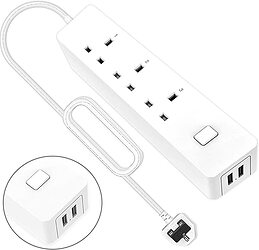I live in the UK, where we have different mains plugs/sockets to most other countries, but also have a place in Spain which uses the Euro F type socket.
As a result, I’ve had to experiment with a variety of different brands of smart sockets.
Generally, there are two main hurdles…
- physically opening the smart socket (in a non-destructive way)
- locating the programming pins and flashing the initial firmware.
Both 1 & 2 are easier with the UK and EU versions of the Sonoff S20 smart sockets, but these have been discontinued and replaced with the S26
The S26 is a little harder to flash, as it doesn’t have four nice 0.1” holes ready and waiting for you to solder-in header pins, but it’s still not that hard. Here’s a guide that explains how…
The disadvantage to the S20/S26 sockets is their size. It’s impossible to put two side by side into a power distribution strip.
EDITED TO ADD A MORE COMPLETE ANSWER…
I forgot to mention that I realise that you’re living in the US. I don’t have any first-hand experience of dealing with US smart sockets, but the Sonoff S26 is available in US socket format.
If you are using other types of sockets then the important thing is that they are ESP8266 or ESP8285 based devices, otherwise the issues of being able to open and re-program the device are irrelevant.
I’ve tended to migrate away from the Sonoff devices because of their physical size and instead use these Shelly Plug S sockets for my Spanish devices…

They are small enough to fit side by side in most multi-outlet power strips. A company called Blitzwolf also makes an almost identical device (obviously assembled in the same factory).
In the UK there aren’t many small profile smart sockets, and the ones I have found are extremely difficult to open, as they are friction welded closed rather than being screwed together.
I have had great success with this U.K. smart power strip…
It contains 4 relays (the two USB sockets on the end are connected to the same relay) but it’s main drawback is that it only has one physical switch, so it’s not possible to manually turn one socket on/off using the switch. Depending on the application, I tend to either disable the switch entirely, or use it to turn everything on/off and rely on the Blynk app to control the individual relays/sockets.
There is also an EU version of this power strip too, so maybe there is a US version too?
Pete.

